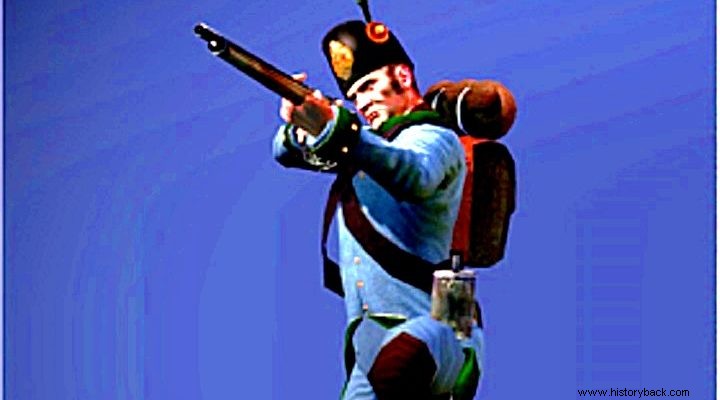
The 18th and 19th centuries were the period when all armies relied on the leiocan frontal musket as their primary infantry weapon. However, a gunsmith in Tyrol saw into the future. Bartholomäus Girandoni lived in Tyrol.
Traditionally the area was the source of the best light infantry, the famous "hunters" of the Austrian Army, who trained themselves by hunting in the high mountains from childhood. For the people of Tyrol their rifle was just an extension of their hands.
So the Austrian inventor created, in 1779, after years of efforts, probably the first repeating rifle in history. His eponymous rifle was an airgun and capable of firing 30 rounds without refilling its compressed air tank. The rifle was known in Austria and Germany as an "air rifle".
It was in use with the Austrian Army, in limited numbers, from 1780-1815. But its main problem was that in order to fill its air tank with compressed air, the operator needed to use a manual pump, making 1500 revolutions of the lever! But the weapon had extraordinary advantages.
It had an amazing rate of fire for the time and fired smokeless pellets so the operator was not betrayed by the smoke. However, he presented problems that led to his retirement from active service. The air tank was made of iron, but due to the insufficient technology of the time there were application problems, in addition to the particularly high production costs.
Another problem was the time and effort involved in refilling the air tank. This problem was reduced by the use of large pumps carried on carriages. However, the withdrawal of the soldiers to the carriages with the pumps during the battle must not have been a particularly simple matter. Also the rifle proved to be very sensitive and the air tank often broke resulting in its unusability.
Because of the above the soldiers who carried the rifles had to be extremely well trained in its use, which could not always happen, unlike the training in the use of the musket which was a rather simple matter.
The rifle was 1.2 m long and weighed 4.5 kg. He put 13mm caliber bullets. (0.51 in or otherwise 0.46 in) and was fed from a 20-round magazine. After each shot the user had to raise the rifle vertically to allow the next bullet to roll into the chamber from the magazine.
The 1788 Light Infantry Campaign Regulations states that each rifleman carried three, in total, full tanks of compressed air into battle. This saved time and increased the speed of the weapon.
It also carried a hand pump, cleaning rod, mold for casting lead pellets, 100 pellets in total – one in the chamber, 19 in the magazine and the remaining 80 in four metal cartridge cases. The compressed air tank was located in the stock of the rifle. The weapon was effective up to 120 m, although it could engage targets at greater distances. He could put 30 fireballs with each tank.
This pioneering rifle was the first repeating weapon in service with any military in history and the first to carry a magazine. In addition to the Austrian climbers, it became famous during the Lewis and Clark expedition. Equipped with rifles of this type, the American explorers reached the Pacific Ocean crossing North America along and facing every threat from the Indians.
